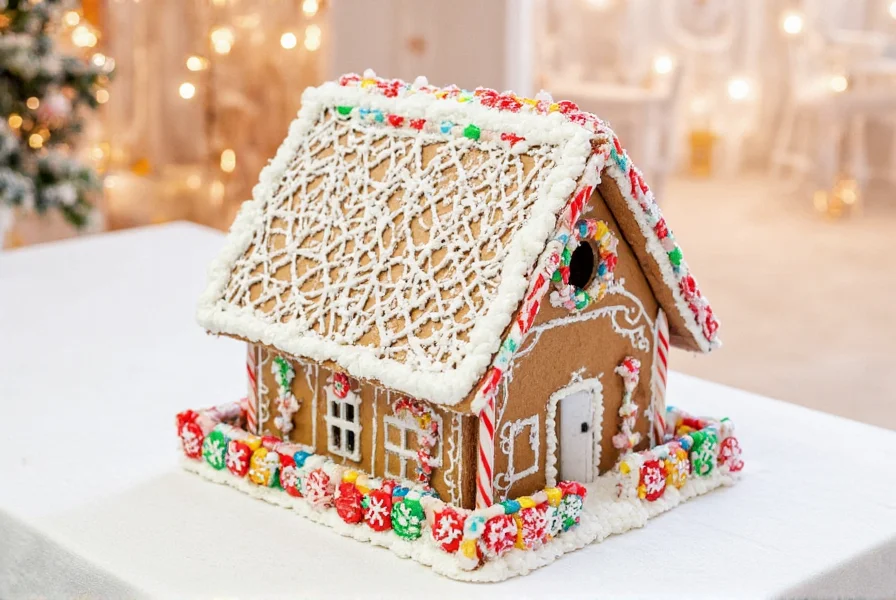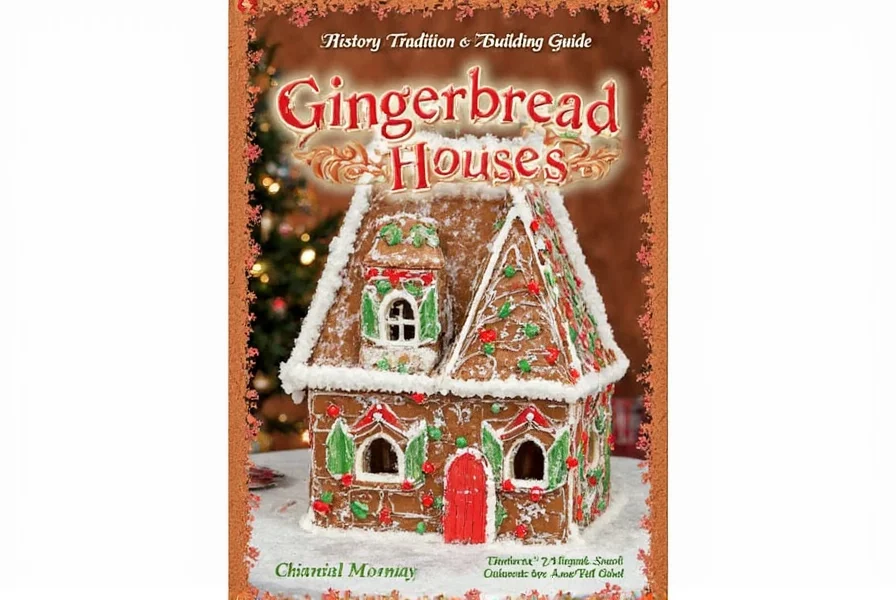For over two centuries, gingerbread houses have captured imaginations during the holiday season. These intricate edible structures represent more than just a craft activity—they embody cultural heritage, creative expression, and family bonding. Understanding their historical roots and construction techniques reveals why this tradition continues to thrive in modern celebrations.
The Historical Origins of Gingerbread Architecture
Gingerbread itself dates back to medieval Europe, but the concept of constructing edible houses emerged in 19th century Germany. The publication of the Brothers Grimm's "Hansel and Gretel" in 1812 provided the cultural catalyst, featuring a witch's house made of bread and candy. German bakers, particularly in the region of Nuremberg known for its gingerbread craftsmanship, began creating elaborate edible structures as holiday centerpieces.
By the mid-1800s, gingerbread house construction had spread throughout Europe and to America with German immigrants. Queen Victoria and Prince Albert's adoption of many German Christmas traditions, including gingerbread houses, helped popularize them across the British Empire. The first commercial gingerbread house kits appeared in the United States in the 1970s, making the tradition accessible to families without advanced baking skills.
Cultural Significance Around the World
Gingerbread houses have evolved differently across cultures while maintaining their festive essence:
| Region | Traditional Features | Special Occasions |
|---|---|---|
| Germany | Intricate piped details, marzipan decorations | Christmas markets, Advent season |
| United States | Colorful candy decorations, creative themes | Christmas, school holiday activities |
| Scandinavia | Simpler designs, traditional gingerbread cookies | St. Lucia celebrations, Yule |
| Eastern Europe | Elaborate castles, religious symbolism | Christmas Eve, religious holidays |
Traditional Gingerbread Recipe and Construction Techniques
The foundation of any successful gingerbread house is the cookie dough. Authentic German Lebkuchen-based recipes include:
- 3 cups all-purpose flour
- 1 tsp baking soda
- 2 tsp ground ginger
- 1 tsp cinnamon
- 1/4 tsp cloves
- 1/4 tsp nutmeg
- 1/4 tsp salt
- 1/2 cup unsalted butter
- 1/2 cup brown sugar
- 1/2 cup molasses
- 1 large egg
Professional bakers recommend chilling the dough for at least 24 hours before rolling and cutting to prevent shrinkage during baking. Templates should be cut from cardboard for precision, and royal icing—made from egg whites and powdered sugar—serves as the structural "glue" that hardens to hold walls and roof in place.

Step-by-Step Building Process
Constructing a gingerbread house requires patience and planning. Follow these professional techniques for best results:
- Template creation: Design or print templates for each component (walls, roof, chimney) at actual size
- Dough preparation: Roll chilled dough to 1/4-inch thickness between parchment paper
- Precise cutting: Use sharp knife to cut shapes while dough is still cold
- Baking: Bake at 350°F (175°C) for 10-12 minutes until firm but not browned
- Cooling: Allow pieces to cool completely on baking sheet before handling
- Assembly: Pipe royal icing along edges and hold pieces together for 30 seconds
- Decoration: Wait 24 hours for structure to set before adding delicate decorations
Common Challenges and Professional Solutions
Even experienced builders encounter issues. Here are solutions to frequent gingerbread house problems:
- Collapsing walls: Insufficient icing or premature handling. Solution: Use thicker icing consistency for structural elements and allow 30 minutes between assembly steps
- Cracked gingerbread: Dough rolled too thin or baked too long. Solution: Maintain consistent 1/4-inch thickness and check cookies at 10 minutes
- Melting decorations: Humidity affecting candy. Solution: Use royal icing to secure decorations rather than relying on melted candy
- Weak structural integrity: Inadequate icing application. Solution: Apply icing in continuous beads rather than dots for better adhesion
Modern Variations and Creative Adaptations
Contemporary gingerbread house building has expanded beyond traditional designs. Popular modern approaches include:
- Themed constructions: Movie characters, famous landmarks, or seasonal scenes beyond Christmas
- Alternative materials: Gluten-free, vegan, or sugar-free versions accommodating dietary restrictions
- Architectural complexity: Multi-story designs, working elements, and intricate detailing
- Community projects: Large-scale collaborative builds in schools and community centers
Why This Tradition Endures
Gingerbread houses maintain their popularity because they uniquely combine multiple elements that resonate with people across generations. They represent hands-on creativity that engages both children and adults, providing a tangible product of shared effort. The multisensory experience—combining visual design, tactile construction, and eventual consumption—creates memorable holiday moments. Additionally, the tradition's flexibility allows families to develop their own customs while connecting to a broader cultural heritage.
As baking expert Martha Stewart notes, "Gingerbread houses are more than just a holiday craft—they're edible heirlooms that capture the spirit of the season." This sentiment explains why, despite evolving holiday traditions, gingerbread house construction remains a cherished activity worldwide.
What is the origin of gingerbread houses?
Gingerbread houses originated in 19th century Germany, inspired by the Brothers Grimm's "Hansel and Gretel" fairy tale published in 1812. German bakers in Nuremberg, known for their gingerbread craftsmanship, began creating these edible structures as holiday centerpieces, which later spread throughout Europe and America with German immigrants.
How do you prevent gingerbread house walls from collapsing?
To prevent collapsing walls, use royal icing with the right consistency (stiff peaks), apply it in continuous beads rather than dots, hold pieces together for 30 seconds after assembly, and allow at least 30 minutes between construction steps. Professional bakers recommend building the structure in stages and avoiding handling until the icing has partially set.
What's the difference between gingerbread for houses and regular gingerbread cookies?
Gingerbread for houses contains less fat and more structural ingredients than regular gingerbread cookies. House gingerbread typically has more flour, less butter, and often includes additional egg for strength. The dough is rolled thicker (about 1/4 inch) and baked longer to create a sturdy, less crumbly product that can support the weight of the structure and decorations.
How long do gingerbread houses typically last?
A properly constructed gingerbread house can last 2-4 weeks at room temperature in dry conditions. The longevity depends on humidity levels, ingredient quality, and construction technique. In humid environments, gingerbread houses may soften within days. For preservation beyond the holiday season, some people remove edible decorations and keep the structural framework as a decorative piece.











 浙公网安备
33010002000092号
浙公网安备
33010002000092号 浙B2-20120091-4
浙B2-20120091-4